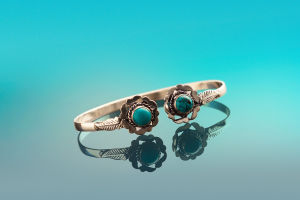Jewelry has been a significant part of human culture for centuries, transcending its role as mere decoration to become a symbol of identity, status, and artistry. If you, Lykker, are wondering where it all started we have the answer!
From ancient civilizations to contemporary design, the evolution of jewelry reflects the changing values and styles of different eras.
This article explores the history of jewelry, its cultural significance, and its modern transformations, with a particular focus on timepieces and their role in personal expression.
History of Jewellery Design: Cartier
Video: Christie's
The Early Beginnings of Jewelry
The origins of jewelry trace back to ancient times, where early humans crafted ornaments from natural materials like shells, stones, and bones. These items were not only decorative but also held symbolic meanings.
In ancient Egypt, jewelry was a crucial aspect of social status. Egyptians used jewelry as amulets, often associated with deities and sacred animals, and placed them in tombs to protect the deceased in their journey to the afterlife.
Over time, jewelry evolved from a functional and symbolic object to a personal expression of wealth and power. During the Roman Empire, the elite wore jewelry as a sign of affluence, while in the Renaissance, the designs became more intricate and reflected the culture's admiration for classical antiquity. Jewelry also began to showcase personal taste and the wearer’s societal position.
Jewelry in the Renaissance and Baroque Periods
The Renaissance period marked a significant turning point for jewelry, with an increased focus on design influenced by nature. Artists and craftsmen began incorporating floral and animal motifs, creating pieces that were both decorative and symbolic.
The Baroque era, known for its opulence, took jewelry design to new heights with extravagant forms, intricate detailing, and lavish use of gemstones and pearls. These pieces were often large, bold, and dramatic, reflecting the grandeur of the era.
As societal structures evolved, jewelry's role as a symbol of power and status grew stronger. It was no longer just about aesthetic value; jewelry became a statement of personal achievement and wealth. This shift was reflected in the art, where jewelry was increasingly depicted in paintings as a symbol of both material and spiritual wealth.
The Industrial Revolution and the Rise of Modern Jewelry
The Industrial Revolution brought about major changes in the production of jewelry. With the advent of mechanized techniques, jewelry became more accessible to a broader audience, allowing for the mass production of items. However, it also led to a democratization of luxury, with more people able to afford jewelry that was once reserved for the elite.
In the late 19th and early 20th centuries, the rise of artistic movements such as Art Nouveau and Art Deco significantly influenced jewelry design. Art Nouveau introduced fluid, organic shapes, with designs that echoed natural forms like flowers and insects. Jewelry became more sculptural, with an emphasis on flowing lines and asymmetry.
Art Deco, on the other hand, focused on geometric shapes, symmetry, and modernity. Designers such as René Lalique made their mark by using materials like glass and creating intricate, relief patterns inspired by nature and the human form. This period saw jewelry becoming not just an accessory but a true form of artistic expression, combining craftsmanship with innovative design.
Modern Jewelry: Sculpture Meets Style
Today, jewelry continues to evolve, with contemporary designers pushing the boundaries of form and material. The focus has shifted towards creating pieces that are not only beautiful but also conceptual.
Modern jewelers draw inspiration from visual art, challenging traditional notions of what jewelry can be. Brands like Lag World, Panconesi, and Olura Jewels are at the forefront of this revolution, creating pieces that resemble wearable sculptures.
These designers experiment with bold shapes and unconventional materials, blending art with craftsmanship in ways that make jewelry an integral part of personal expression. Whether through geometric, minimalist designs or organic, flowing structures, modern jewelry has transcended its traditional role, becoming a medium for creative exploration and artistic innovation.
The Evolution of Timepieces: From Functional Tools to Fashion Statements
Timepieces have undergone a remarkable transformation, evolving from simple instruments for tracking time to essential fashion accessories. The history of watches dates back to ancient Egypt, but it was during the 17th century that mechanical watches began to appear in portable forms, such as pocket watches. These watches became popular among men, often attached to chains and decorated with intricate engravings.
The development of wristwatches in the early 20th century marked a major shift in the way people viewed timepieces. People used wristwatches for practical purposes, and after the 1940s, these timepieces became increasingly popular as a fashion accessory, particularly among women. Over time, wristwatches evolved in both design and functionality, becoming symbols of luxury and sophistication.
Today, watches are no longer just tools for telling time. They are a fusion of engineering, design, and craftsmanship, reflecting the wearer’s personal style. Iconic watch brands collaborate with artists and designers to create limited-edition pieces that blend traditional techniques with contemporary aesthetics. These collaborations have further elevated the watch from a functional item to a statement of individuality and taste.
Conclusion
The art of jewelry and timepieces has come a long way from its humble beginnings. From ancient amulets to modern sculptures, jewelry has always served as a form of personal expression and a symbol of cultural values.
As design continues to evolve, jewelry and watches remain timeless in their ability to combine craftsmanship, artistry, and personal style. With ongoing innovation, these pieces continue to captivate and inspire, reflecting the ever-changing trends and aspirations of the world.


